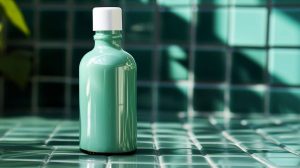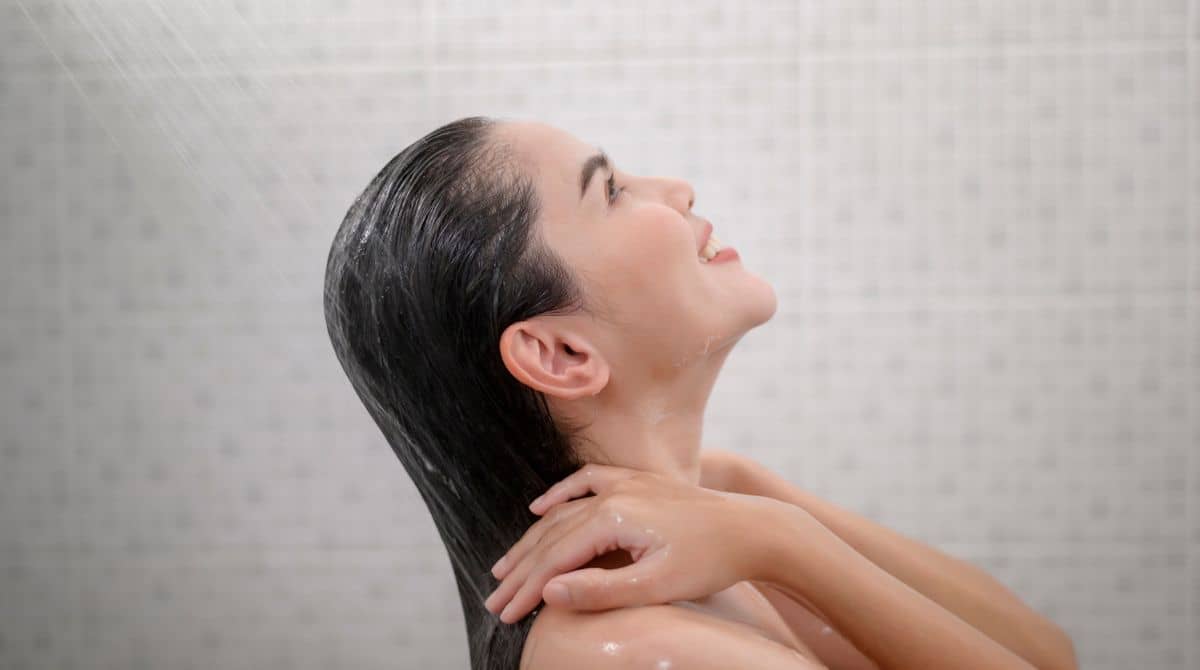Before availability of modern shampoo, people used natural methods like soapwort, clays (rhassoul, bentonite), and herbal infusions (rosemary, lavender) for washing their hair. Additionally, they also used egg yolks, vinegar, lemon juice rinses, water-only washing, and brushing with natural bristles to wash hair.
Basically, they were habituated on indigenous and cultural methods. Apart from this, I try to describe all washing method in ancient, mediaeval and modern method of hair cleaning and washing based on reader customers asking.
How did people wash their hair before shampoo?
Do you think ever about the hair cleaning before the advent of modern shampoos? Basically, they was normally used a variety of natural substances and methods to clean hair. And they were satisfied on those cleaning method.
Soapwort: This is a plant based natural surfactants that create lather when mixed with water for cleansing the hair.
Herbal Infusions: Infusions of herbs like rosemary, sage, or chamomile were widely available and used in that time to clean and condition hair. Because, this herbs essence have effective cleansing and aromatic properties that is needed for hair cleaning.
Clay: Some cultures also force them to used clay or mud to cleanse the scalp and hair. Amazingly, Clay has excellent action to absorb oils and dirt. It thus, leave the hair clean.
Oils: Furthermore, oils such as olive oil or coconut oil were used largely to cleanse and condition hair in some cultural area. They massaged into the scalp and hair with oil and finally, they rinsed out with water.
Water: Using water was also a common practice at all-time even at this modern period. People used to massage on the scalp with water helps to remove dirt and excess oils.
Above mentioned method are widely used depending on the region and availability of resources before advent of commercial product specifically formulated for hair cleansing.

Ancient and Early Hair Washing Practices
You will be astonished to know the method of hair washing of ancient people. Depending on their cultures, they wash their hair by different methods. Those are:
Ancient Egypt: Egyptians used a variety of natural substances such as animal fats and plant oils for hair care. Additionally, they use Saponin-rich plants as soapwort to create lather for cleansing.
Ancient Greece and Rome: Greeks and Romans used a combination of olive oil and fragrant herbs including lavender or rosemary. This ingredient was more effective to cleanse and scent their hair.
Ancient China: On the other hand, Chinese hair care was used to apply rice water as a rinse to cleanse hair. At first, they ferment rice water and then used it to wash the hair which has cleaning and nourishing properties.
Medieval Europe: Most of the people in Europe often washed their hair using a mixture of lye which is derived from wood ash and water. This form of soap removed dirt and oils from the hair and scalp.
Indigenous Cultures: Additionally, some indigenous cultures around the world clay, plant extracts, and fermented fruits to cleanse their hair. Indeed, this cultural practice was encouraged by local flora and cultural traditions.
Middle Eastern and Islamic Traditions: In this area, many people used some traditional substance like oils such as olive oil or sesame oil to cleanse and condition the hair. Not only they apply but also they massaged into the scalp and hair. And finally, they washed out with water.
From the ancient history, hair washing practices were encouraged from cultural beliefs, availability of resources, and climatic conditions though it made the foundation for modern hair care techniques and products.
Medieval and Renaissance Periods
Now, I want to describes the hair washing practices in Medieval and Renaissance periods in Europe,. Basically, their hair washing and hygiene practices were mainly influenced by cultural, religious, and practical considerations. If you want to interest to know it, I describe all about their hair care practices.
Frequency of Washing: Todays, we thinks that frequent washing is good for health though doctors suggest not to wash frequently and excessively. But in the Medieval period, people was not used to wash hair as they believe that oversharing weaken hair root and health issues. Additionally, they used natural oils for hair health and believe that it was beneficial for overall hair health.
Use of Natural Cleansers: In that time, Soap-making techniques were harsh and expensive. So, they used natural substances like plant extracts, herbs, and infusions instead of soap. As well as, they used rosemary, lavender, chamomile, or a mixture of herbs because of its cleansing and aromatic properties.
Rinse with Water: It is also true that most of people were used to rising hair with fresh water that was sufficient to clean away dirt and debris. After simple rising, they massaged the scalp and hair with water to ensure even distribution of natural oils for removing impurities.
Herbal Rinses: Herbal rinses were a popular hair cleaner in that time for it’s cleansing and scenting properties.
Powders and Dry Shampoos: In mediaeval period, some powders made from ground oats, bran, or starches like arrowroot that was used to absorb excess oils and freshen the hair between washes. That’s way, people applied those powders to the scalp and brushed through the hair to absorb oils and refresh the hair’s appearance.
From this discussion, we are sure that all the method and ingredients used in the Medieval and Renaissance periods was simpler and more reliant on natural ingredients compared to today’s commercial products. Indeed, they focus was on maintaining cleanliness and grooming according to existing societal norms and personal preferences.
18th and 19th Centuries
We observe that hair care practices continued influenced by changing social norms, technological advancements, and the availability of new ingredients in the commencement of 18th and 19th Centuries. All of practices of that time are presented here:
Soap and Shampoo: Early of that century, Soap-making techniques improved by including widespread use of soap bars for cleansing both hair and body though some soaps could be harsh. But, some people look for milder and gentle alternatives.
Herbal Infusions and Vinegar Rinses: At present, herbal infusions, such as chamomile or rosemary, has been becoming popular for their cleansing and conditioning properties. As well as, Vinegar rinses were also used to clarify the hair and scalp. It also remove residue and restore pH balance.
Powders and Pomades: Hair powders are widely available fashionable ingredients, especially among the upper classes people. It mainly absorb excess oils and freshen the hair between washes. In addition to, it were often scented and were used to style and condition hair. And it finally ensures shininess of hair.
Combs and Brushes: The use of combs and brushes was becoming as a essential tool for grooming and styling hair.
Industrialization and Commercialization: Industrialization at the end of 19th century allow the mass production of personal care products. These opened the door of shifting towards convenience and standardized formulations.
Above all, in 18th and 19th centuries, we noticed a blend of traditional practices with emerging commercial products which reflect societal values and technological advancements in hair care product.
The Advent of Modern Shampoo
The advent of modern shampoo is the blessing time undoubtedly for us that will be easily understood if you read this section.
Early Formulations: The earliest commercial shampoos was started in the late 19th and early 20th centuries based on natural ingredients like soap, mixed with herbs or fragrances.
Synthetic Detergents: The development of synthetic detergents in the 1930s such as sodium lauryl sulfate (SLS) ensures effective cleansing without compromising the alkalinity of traditional soap.
pH Balance: Then, modern shampoos are specially formulated to maintain a pH balance according to the necessity of the scalp. This balance pH helps to cleanse effectively without stripping away natural oils excessively.
Specialized Formulations: After this, many excellent shampoos have been developed to cater to specific hair types. Besides, these types of hair care treat dryness, dandruff, color-treated hair, and more.
Conditioning Agents: Addition of conditioning agents such as silicones, proteins, and moisturizers in modern shampoo enhances its fruitful activity. Basically, these ingredients are more helpful to smooth the hair cuticle, reduce tangling, and enhance shine and manageability.
Overall, the development of modern shampoo is nothing but representation of scientific innovation, consumer demand for convenience and effectiveness. Todays, this hair care product becomes an essential part of daily hygiene and grooming routines undoubtedly.
Frequently Asked Questions (FAQs)
1. How did they wash their hair in the 1800s?
In the 1800s, people used various methods to wash their hair such as soap (bar soap), natural ingredients (eggs, beer, or a mixture of water and vinegar), herbs and botanicals (rosemary, lavender, or chamomile) though it depends on the available resources and personal preferences.
2. How did Romans wash their hair?
The ancient Romans had several methods for washing and caring for their hair. Such as using water and oil, soap made from animal fats, herbs and infusions and strigils and others.
3. How did ancient people take care of their hair?
Ancient hair care practices are largely influenced on different indigenous cultures and societal beliefs. as olive, coconut, or almond oil, herbal and botanicals infusions, combs and brushes, clay, mud, or plant extracts are widely used in ancient time for hair caring.
Conclusion
People in ancient and mediaeval time relied on natural cleansers like soapwort, clays, and herbal infusions. Those method and ingredients was so simple and easy such as egg yolks, vinegar rinses, and water-only washing. But, it was capable of maintaining hair cleanliness and health.
